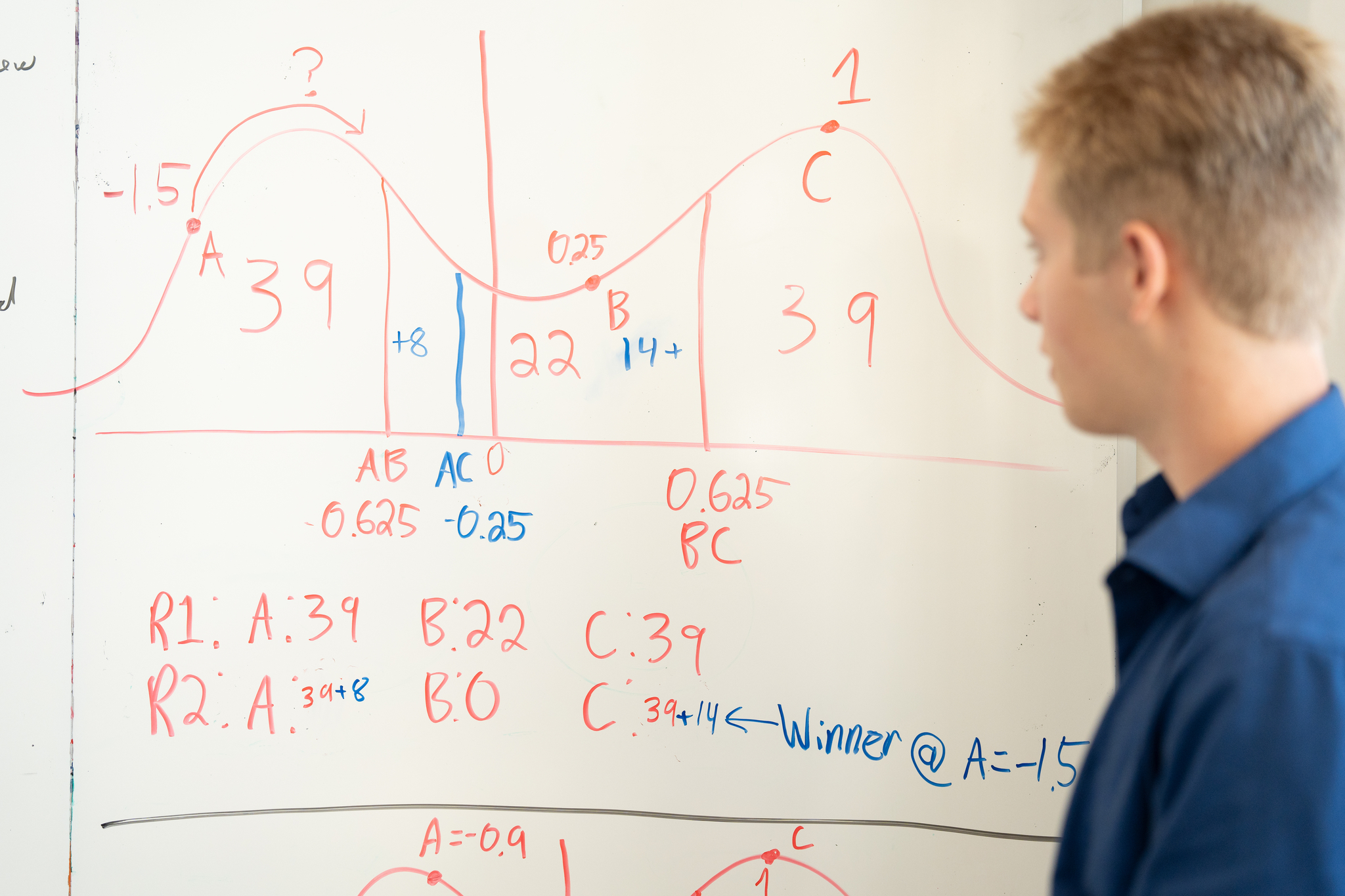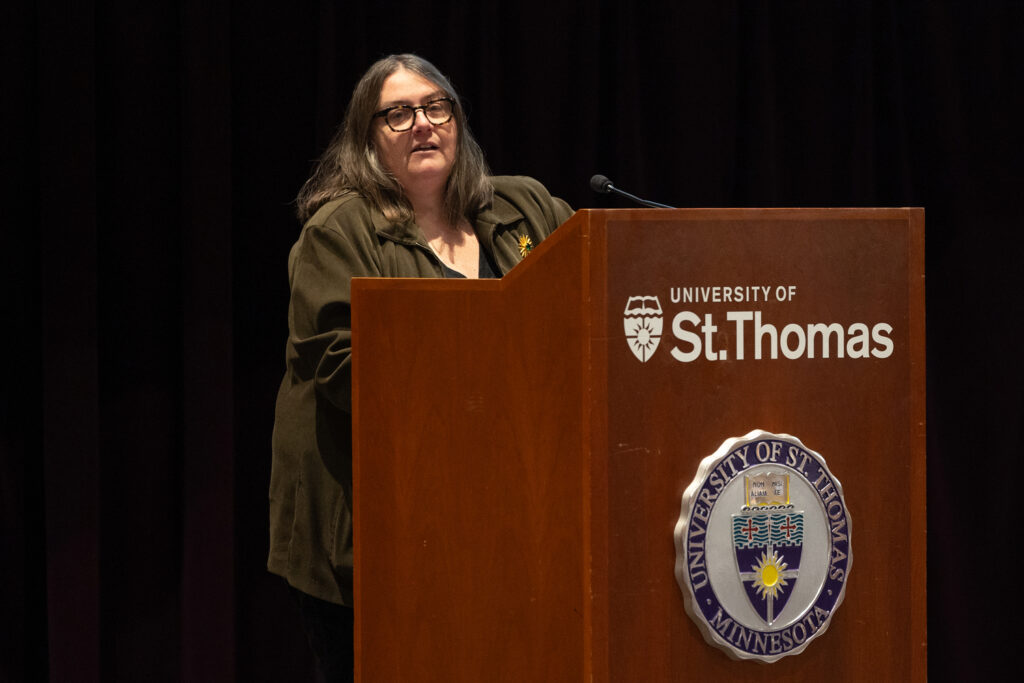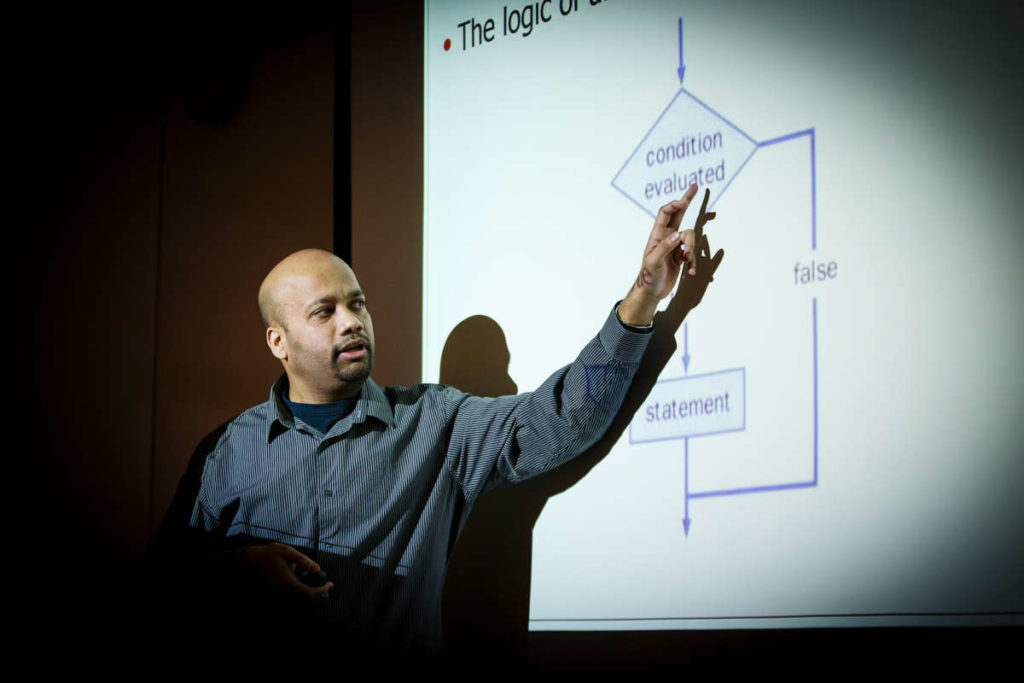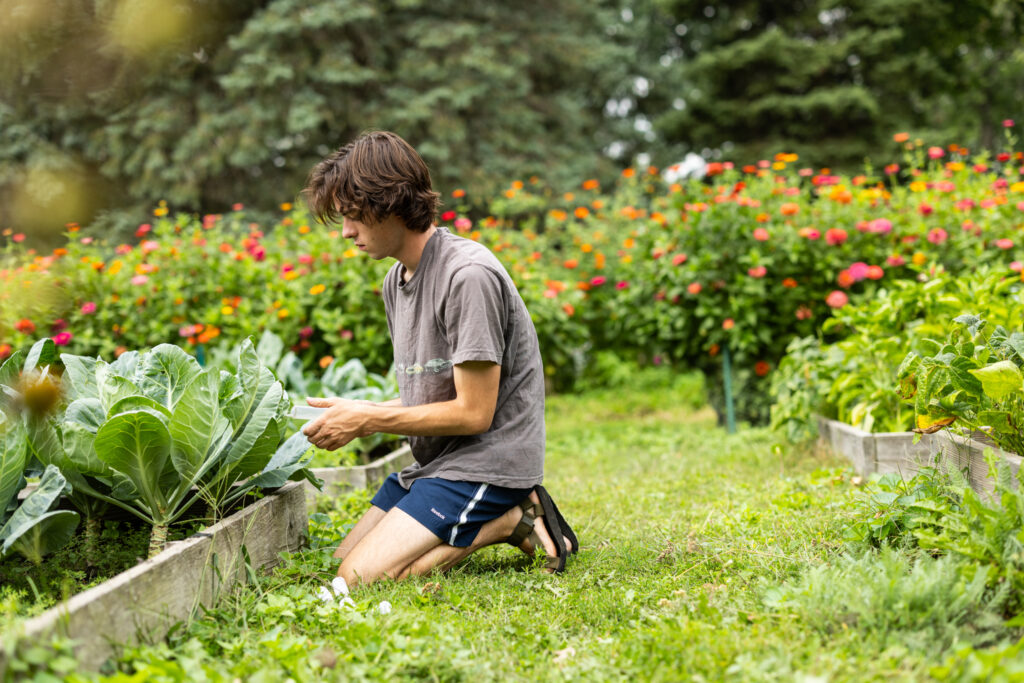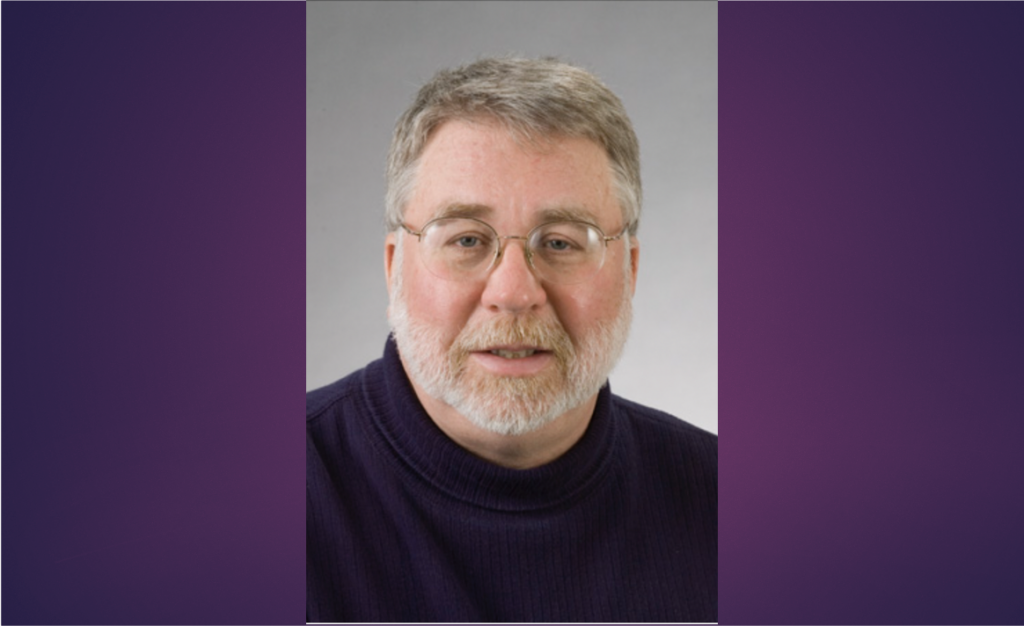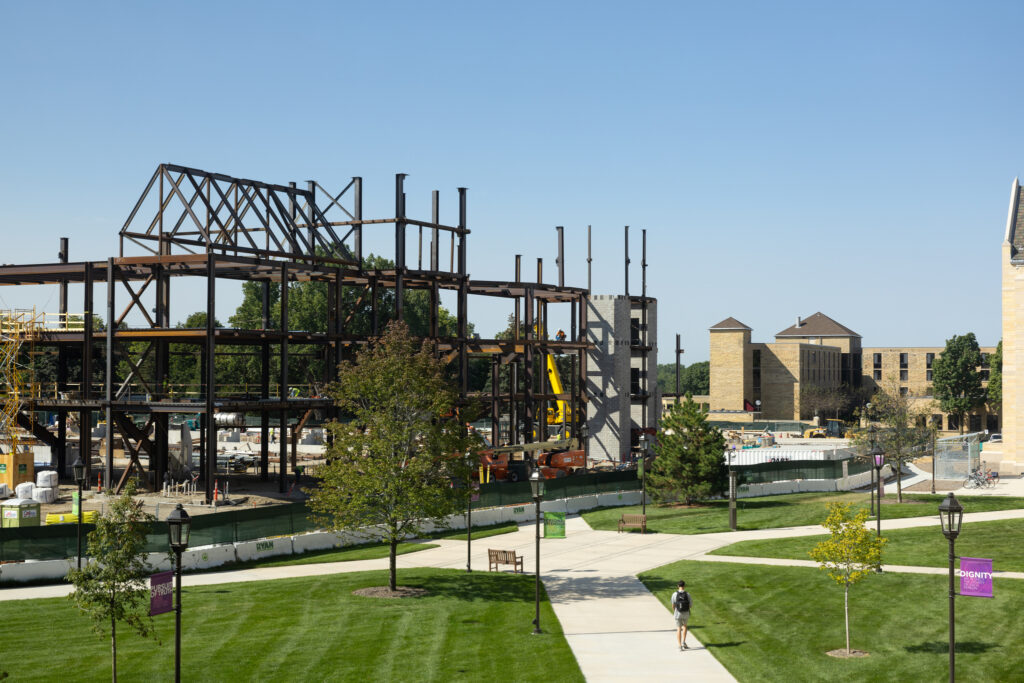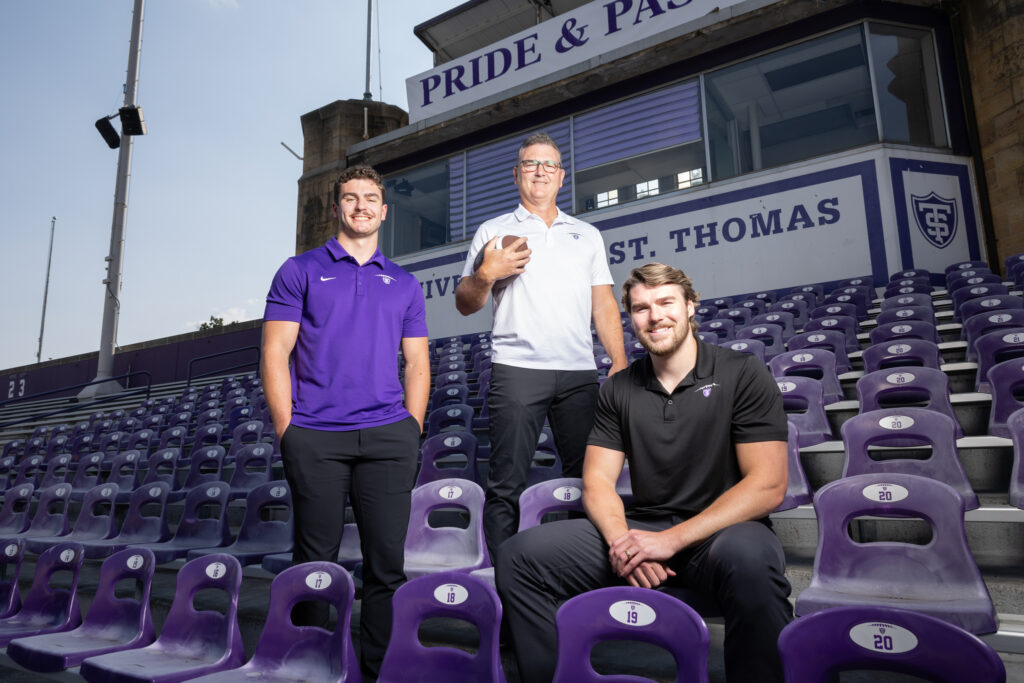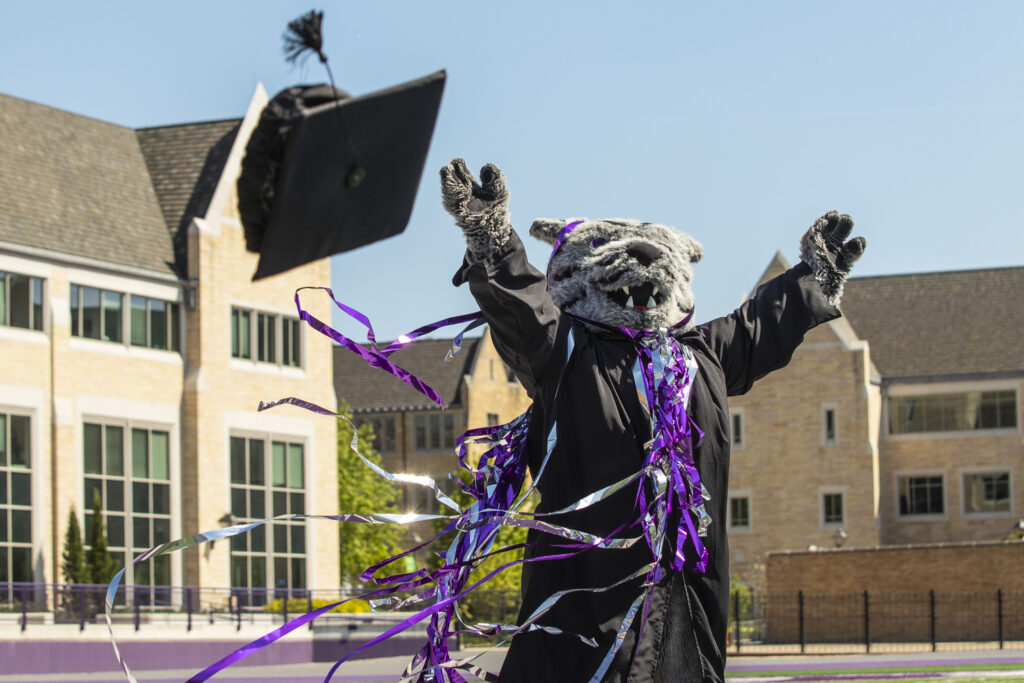Predicting the outcome of a political election is extremely problematic. From the candidates to the voters – and everything in between – elections are a complicated puzzle. But what if a math equation could provide answers long before a single vote was cast?
Mathematicians at the University of St. Thomas in Minnesota are studying how political candidates can optimize their positions on the issues to win elections. By testing myriads of models and equations, researchers hope to better understand winning campaign strategies and, ultimately, forecast election results.
“So many researchers look at the intricacies of voting and elections – it’s been studied a lot – but not so much with a strictly mathematical lens,” said Dr. Natasa Dragovic, assistant professor of mathematics at the College of Arts and Sciences. “We’re contributing to a truly emerging and growing field that sits at the intersection of math and democracy.”
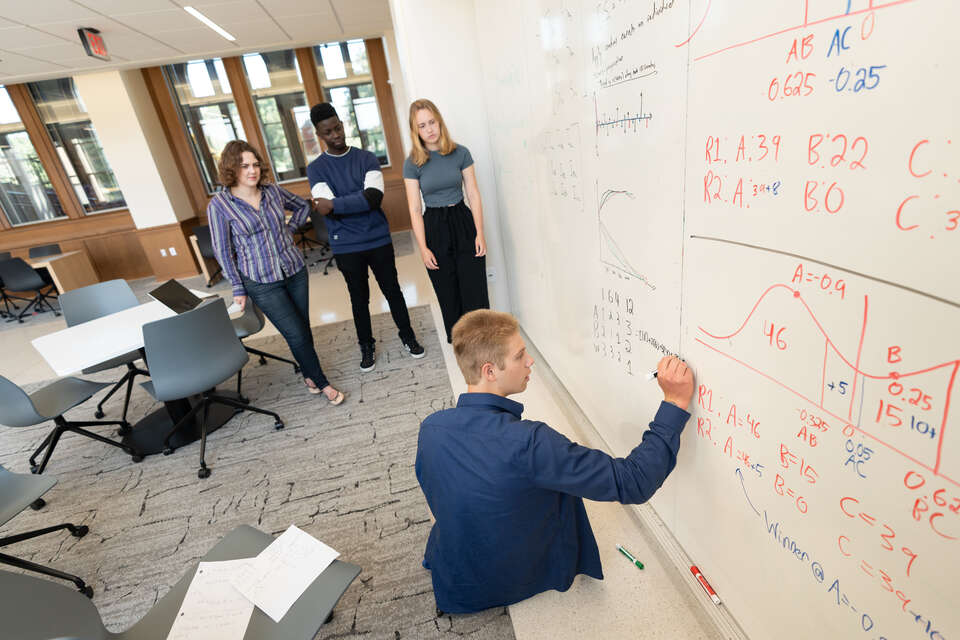
Dragovic is leading a team of undergraduate student researchers studying the opinion dynamics behind elections. Together, they use math to model how (and why) voters change their opinions over time.
“It may be a developing field, but with each model we’re getting some very interesting results,” Dragovic said.
There is much to be studied. St. Thomas mathematicians are modeling how a variety of factors impact a race, including third-party candidates, social media and unexpected shocks. Researchers then analyze how campaigns can navigate those factors to mathematically ensure their candidate has the best chance to win come Election Day.
Jackson Gyurisin ’26 is researching how different candidates fare in different voting systems. He’s run a variety of election models featuring liberal, centrist and conservative contenders, testing out how they perform in both plurality and ranked choice voting systems.
“I’ve always been really into board games, getting to watch how one player reacts to the moves of another,” Gyurisin said. “It’s the same social experiment here, except this time I’m studying how candidates change their positions to better position themselves to win an election.”
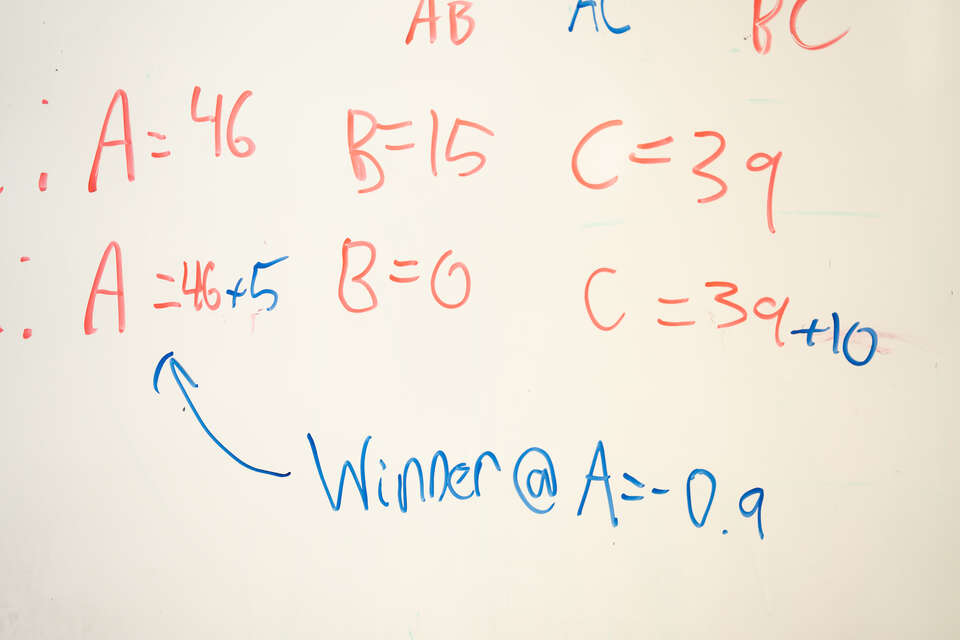
For now, St. Thomas researchers are relying on hypothetical candidates and races to run simulations for a variety of local, state and national elections. As they iron out their models, they plan to begin incorporating real data from this year’s elections and years past.
Madi Herzog ’26, a mathematics major with a minor in applied statistics, is studying how political candidates can amplify their message over social media to earn the most votes. With every test, Herzog says she discovers new variables that will need to be considered.
“Math can definitely play a role in predicting elections, but the challenge is bringing all the puzzle pieces together – finding the right models and testing different scenarios,” Herzog said. “We’re not there yet, but eventually all those little puzzle pieces will fit and we’ll have a phenomenal model.”
Students were invited to work alongside Dragovic through the Center for Applied Mathematics (CAM) and its summer research program at St. Thomas. CAM is designed to increase student awareness of the applications of applied mathematics.
“So often kids question why they need to learn about math in school,” said Gyurisin, a mathematics and education double major. “As a future educator, I now have a very real experience to point to. I can show them how I was able to think creatively, apply math, and solve a real problem.”
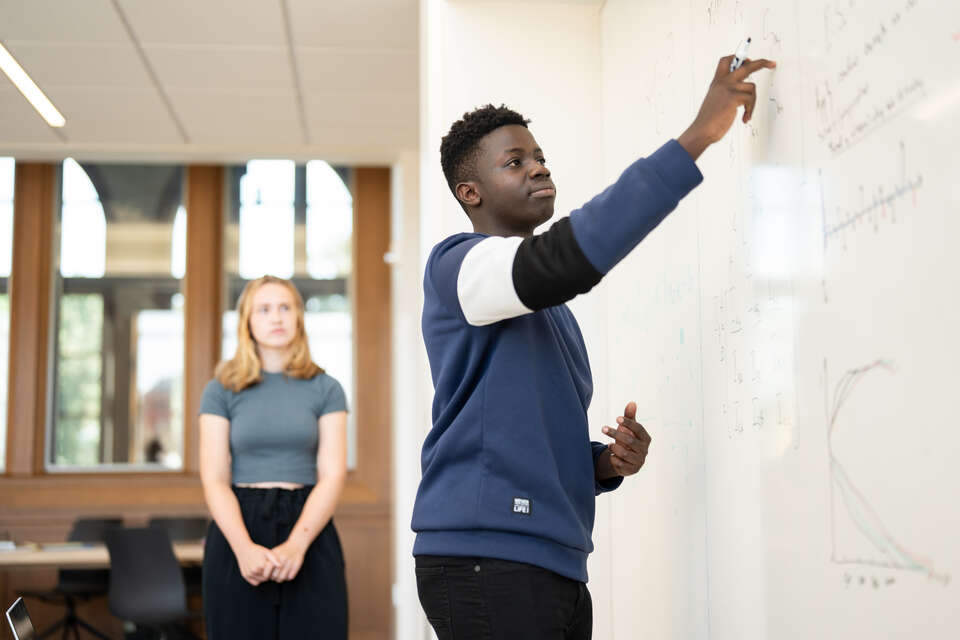
The experience has been eye-opening even for the non-math majors in the research group. Electrical engineering major Rweto Rwetoijera ’26 has enjoyed the chance to stretch his abilities in coding, particularly when it comes to math models.
“I was originally really interested in the research topic, but I’ve found that it’s been a good experience to work on my own skills,” Rwetoijera said. “As an electrical engineer, coding is going to be a big part of my life, and this project has allowed me to put those skills to work.”
The students will be watching the Nov. 5 elections closely and plan to continue experimenting with their models. They hope to present their findings at area and national conferences over the next year.
“One of the things I love about this project is that it’s not an experience students would typically find in the classroom,” Dragovic said. “Instead, students are running some really cool applied experiments, and now, they can contribute what they’ve learned in a very active field.”
